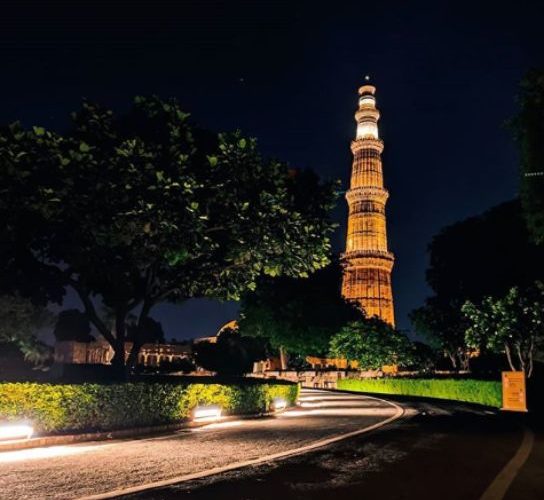
Qutb Minar is the second largest brick minaret in the world. The
minaret, rising 80 meters (270 feet) into the sky, is made of marble
and red sandstone, made of brick carved using the sayings of the
Koran. Construction took four years, starting in 1193. A round
staircase with 379 steps leads to the top; It is closed to visitors.
Quwwat-ul-Islam Mosqueaa, the first mosque built in India, lies at
the foot of the minaret. Nearby is the Iron Pillar, so named because
it is made of metals that do not rust.

Qutb-Minar is a 73-meter-tall victorious tower built in 1193 by
Kutab-ud-din Aibak immediately after the defeat of the last
Hindu kingdom of Delhi. The tower has five separate floors,
each of which is marked by a protruding balcony and narrows from
15 m in diameter at the base to 2.5 m in the upper part. The first
three floors are made of red sandstone; fourth and fifth floors of
marble and sandstone.

At the foot of the tower is the Kuwat-ul-Islam Mosque, the first
mosque built in India. The inscription above its eastern gate
defiantly suggests that it was built from material obtained as a
result of the destruction of “27 Hindu temples.” In the courtyard
of the mosque is an iron pillar 7 meters high. They say that if
you can circle his back to him, your desire will be fulfilled.

The origins of Kutab-Minar are shrouded in contradictions. Some
believe that it was erected as a victory tower to mark the beginning
of Muslim rule in India. Others say that he served as a minaret for
the muezzins to call believers to prayer.
However, no one can dispute that the tower is not only one of the
best monuments in India, but also in the world. Qutab-ud-din Aibak,
the first Muslim ruler of Delhi, began the construction of Qutab Minar
in 1200 AD, but could only finish the basement. His successor,
Iltutmush, added three more floors, and in 1368 Firoz Shah-Tuglak
built the fifth and last floor.








0 comments:
Post a Comment